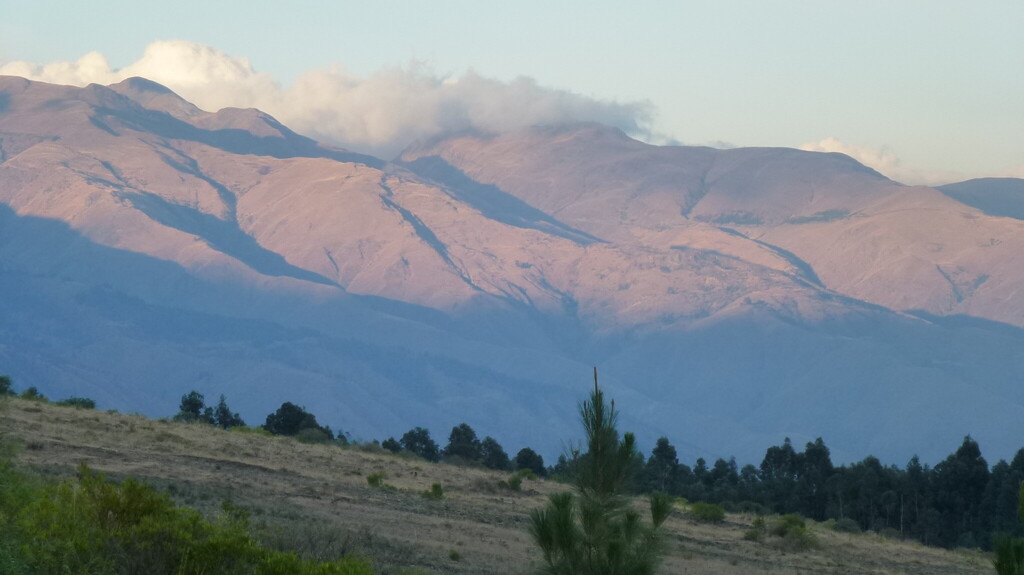Unknown diversity of Bolivia
When you think of Bolivia, you think of the Andes. But the country slopes towards the Amazon basin in the east and two-thirds of the country's surface is lowland, including large sparsely populated areas of tropical rainforest. The country is poor and rich at the same time. Rich in natural resources and diverse landscapes. Poor in income. Along with Haiti and Nicaragua, Bolivia is one of the poorest countries on the American continent.
We travelled for two days to Rurrenabaque in the tropical lowlands to visit PRISA Bolivia. For almost 20 years they have been helping farmers to cultivate their land with agroforestry, preferably dynamic agroforestry. Dynamic agroforestry proves particularly effective in cacao cultivation. We visit a cocoa plot and Senora Geyza Chuqui shows us wild and hybrid cocoa.
Wild cocoa is more aromatic, but also smaller. Hybrid cocoa yields more, but is more susceptible to disease. Dynamic agroforestry protects against diseases and - this is a very important aspect - produces food and other products for sale to farmers on the same plot.
What is dynamic agroforestry?
And this is where my thoughts start to circle, I keep looking for solutions without having found a definitive answer. To understand: agroforestry can be defined as any agriculture that works with trees, such as a meadow orchard with fruit trees. Dynamic agroforestry also works with trees and yet this method is different from almost all I have seen so far. Here are the key aspects:
- Rows of trees are not planted, but planting systems are built up.
- The condition is not static - i.e. I plant a tree and then harvest it - but a plant consortium is planted that is constantly changing, hence the term "dynamic".
- The pruning of plants is an important aspect, because it specifically keeps the system in the status of "youth", because the greatest growth spurt in plants also occurs in youth. Cutting encourages the plant to sprout again and again, which increases productivity and the build-up of biomass as well as fruit in the system.
- Old individuals are cut down so that they grow youthfully again, or they are cut down completely to make room for the young ones.
- Cutting the plants constantly adds biomass to the soil and thus builds up humus.
- Diversity in the system is encouraged and natural succession is usually allowed. This creates a healthy system with an intact soil and few diseases.
- The dynamic plant system, which very often resembles a natural forest, is constantly observed and learning takes place. How do the plants react, why does one grow well and another not ...?
In short, the basic principles are simple: when growing products for people, diversity and natural dynamics are promoted and pruning is done regularly. In sum, the farmer gets just as much, in many cases even more, yield as from conventionally farmed land. In the long run, he has less work and he has created a healthy system that does not require fertiliser and pesticides. However, all of this requires knowledge and experience to use the optimal combination of plants that will yield the most, as well as the knowledge of when and how to prune.
The eye of the needle is three places in Bolivia
And here is the eye of the needle. The knowledge for this method was copied from the indigenous peoples of Latin America and further developed in Bolivia in the 1990s with the support of the German Development Service (DED). But as is the case with many good methods, it was not systematically developed further and, above all, not effectively disseminated.
Today, there are three places in Bolivia in particular where this knowledge is applied: In Rurrenabaque and in Sapecho in the lowlands as well as in the highlands on the Mollesnejta research farm near Cochabamba. Near Sapecho, this method has been scientifically researched for years at Finca Sara Ana, with a special focus on the cultivation of cacao. But Sapecho is a small village in the jungle without an airport. The only way to get there is via the most dangerous road in the world, which leads from La Paz across the Andes into the lowlands and has been under construction for two years. In addition, rains in March 2014 washed away the road to Sara Ana. Now you can only get there by dugout canoe on the river. Not a place for mass tourism. Rather one for adventurers and doctoral students, because numerous doctoral theses were written on this cocoa finca. Many papers investigated whether and how agroforestry, especially dynamic agroforestry, affects the cultivation of cocoa.
Research is also being carried out in Combuyo. In the meantime, 36 different agroforestry plots have been established here, but unlike in the tropics, the plants grow only slowly due to drought and the altitude of 2,800 m above sea level. The first results are already visible, but more time is needed.
A solution for humanity?
This method could be a solution for humanity, especially in times of climate change ... may I think so presumptuously? But I have seen and experienced for three years in the various Naturefund projects that dynamic agroforestry works.
Maybe it is good that we are now starting a reforestation project in Bolivia, working with AGRESCOL Andes, ECO-SAF and Mollesnejta to support 20 families in two villages in Tunari National Park to introduce dynamic agroforestry on their land. Maybe the project will work out and we can support the introduction of dynamic agroforestry in more villages next year. And then report about it, about the method, about the positive effects for people and nature...? It is a beginning.

